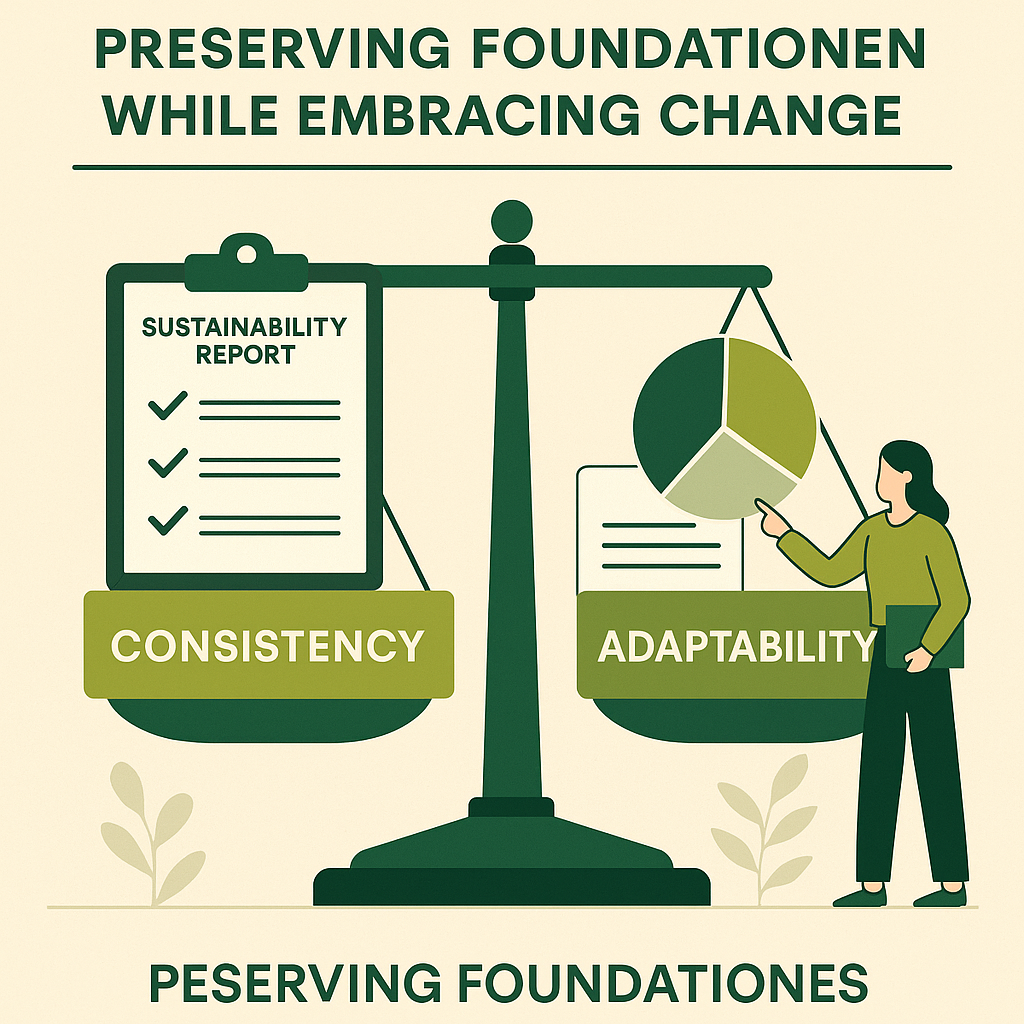As the demand for corporate transparency intensifies, sustainability reports have grown far beyond regulatory checklists. They now serve as strategic instruments that communicate a company’s progress, risks, and ambitions. Yet, the true value of a sustainability report lies in its ability to evolve. A report that remains static risks misleading its audience, presenting outdated metrics or narratives that no longer reflect the organization’s reality.
To maintain credibility and strategic utility, sustainability reporting must strike the right balance—retaining essential structures while continuously adapting to new information and shifting contexts.
Core Components That Should Stay Consistent
At the heart of any effective sustainability report is a set of foundational elements that must remain stable across reporting cycles. These ensure clarity, comparability, and alignment with long-term business strategy:
- Strategic Framework: This includes the company’s sustainability vision and how it aligns with broader business objectives. It provides direction and ensures the report reflects a consistent strategic narrative.
- KPIs and Methodology: The use of standardized, transparent metrics enables stakeholders to assess progress with confidence and compare performance across time and industry peers.
- Long-Term Goals: Ambitions such as decarbonization targets, diversity commitments, or community impact objectives form the backbone of accountability, offering a roadmap for future action.
These consistent elements form the reliable structure upon which dynamic, adaptive content is layered.
What Must Evolve to Stay Relevant
While the structural integrity of the report should remain intact, several aspects must evolve with each cycle to reflect new realities:
- Performance Data: Up-to-date metrics are critical to represent real-world outcomes. Without fresh data, reports lose their value as decision-making tools.
- Narrative and Context: As the external environment changes—whether through shifting stakeholder expectations, technological advances, or global crises—the way companies tell their stories must adapt. Highlighting new achievements, lessons learned, and emerging challenges keeps the narrative authentic and engaging.
- Risk Landscape: The emergence of new environmental, regulatory, and social risks requires ongoing analysis. Ignoring these shifts can result in blind spots that undermine resilience and preparedness.
- Governance Structures: As sustainability becomes more integrated into core strategy, governance must evolve accordingly. This includes changes in oversight roles, board involvement, and internal accountability mechanisms.
Failing to update these elements risks turning a sustainability report into a static archive—detached from the organization’s ongoing journey.
Dynamic Reporting as a Strategic Advantage
The most effective sustainability reports are living documents. They evolve with the company, respond to the world around them, and reflect continuous improvement. Organizations that approach reporting as an iterative process—not a one-off exercise—signal maturity, foresight, and a genuine commitment to transparency.
To help sustainability teams navigate this balance between consistency and change, our tailored reporting module has been designed to simplify the reporting process. It enables seamless data consolidation, narrative updates, and risk assessment—ensuring each report is not only accurate but also forward-thinking.
Conclusion: Future-Proofing Through Adaptive Reporting
Sustainability reporting must remain rooted in its strategic framework and long-term commitments, but it cannot afford to stand still. By combining stable foundations with responsive, evolving content, organizations can produce reports that are both credible and compelling.
In a world where trust is earned through transparency and adaptability, embracing dynamic reporting isn’t just best practice—it’s a business imperative.

